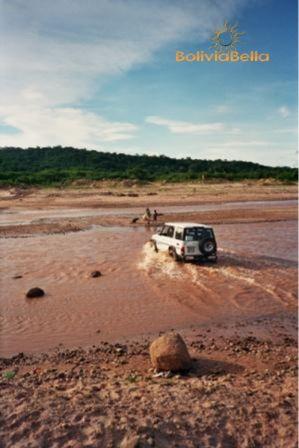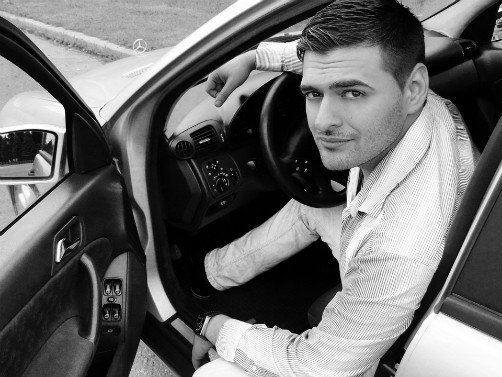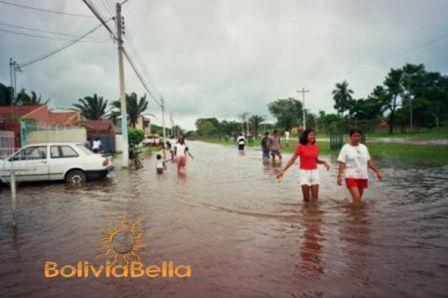|
Precautions and Road Safety in Bolivia As a foreigner driving for the first time in Bolivia, exercise road safety and drive more defensively that you are accustomed to, until you begin to feel comfortable and capable of managing Bolivia's traffic rules (many of which are not observed) and road infrastructure (much of which is in poor condition). Be certain that you understand Bolivian traffic laws, and are able to read and understand road signs. Traffic in Bolivian cities tends to be very, very messy and will be an exercise in patience, to say the least. When you are driving in Bolivia, you should always be alert and follow these wise road safety tips. You must be 18 to legally drive in Bolivia. While they driving tips have been written by the U.S. Department of State for US citizens, they are good precautions for anyone to heed.
Road Safety and Road Conditions in BoliviaWhile in a foreign country, U.S. citizens may encounter road conditions that differ significantly from those in the United States. The information below concerning Bolivia is provided for general reference only, and may not be totally accurate in a particular location or circumstance. U.S. citizens planning on driving in Bolivia, despite the hazards described below, should obtain an international driver's license through their local automobile club before coming to Bolivia.
Foreigners who have obtained residency in Bolivia and are over 18 years of age may use an International Driving Permit for up to 90 days after which they must obtain a Bolivian driver's license to continue driving legally. Bolivia is famous for having some of the most dangerous roads in the world. Some routes along the Andes are single lane, dirt roads with breathtaking drop-offs. Such trips are not for the faint of heart. road conditions in Bolivia are hazardous. Although La Paz, Santa Cruz and Cochabamba are connected by improved highways, the vast majority of roads in Bolivia are unpaved. Few highways have shoulders, fencing or barriers, and highway markings are minimal. Yielding for pedestrians in the cities is not the norm.
For trips outside the major cities of Bolivia, especially in mountainous areas, a four-wheel-drive vehicle is highly recommended. Travel during the rainy season (November through March) is difficult, as most routes are potholed, and some roads and bridges are washed out. Added dangers are the absence of formal training for most drivers, poor maintenance and overloaded vehicles, lack of lights on some vehicles at night, and intoxicated or overly tired drivers, including commercial bus and truck drivers. Remember, land travel in the Andes and tropical areas of Bolivia can be precarious. Road conditions are often primitive. High altitude trips can be very cold, especially in the winter (June-August). Low altitude trips in the tropics can be hot, dusty and humid. Travel in the rainy season (November-March) can be complicated by storms, difficult river crossings and collapsed roads due to landslides. The majority of intercity travel in Bolivia is by bus, with varying levels of safety and service. In recent years there have been major bus crashes on the highway between La Paz and Oruro, and on the Yungas road. The old Yungas road is considered the world's most dangerous road. Taxis and vans dominate intracity transportation. From a crime perspective, public transportation is relatively safe and violent assaults are rare. However, petty theft of unattended backpacks and other personal items does occur. For reasons of safety, visitors are advised to use radiotaxis whenever possible. Drivers of vehicles involved in traffic accidents are expected to remain at the scene until the arrival of local police authorities. Any attempt to leave the scene is in violation of Bolivian law. The Embassy believes any attempt to flee the scene of an accident would place the driver and passengers at greater risk of harm than remaining at the scene until the arrival of police. Road Safety While You Drive in Bolivia
• If you plan to rent a car, choose a type that is commonly available locally. Where possible, ask that markings that identify it as a rental car be removed. Make certain it is in good repair. If available, choose a car with universal door locks and power windows, features that give the driver better control of access. An air conditioner, when available, is also a safety feature, allowing you to drive with windows closed. Thieves can and do snatch purses through open windows of moving cars.
• In addition to car insurance, you should consider purchasing travel insurance to cover medical expenses should you choose to drive in Bolivia. Be aware that in Bolivia you must either have medical insurance or pay in cash for any medical assistance or procedures you receive. You may also be liable for the medical costs of the other driver and/or passengers, if you caused the accident. • Keep car doors locked at all times. Wear seat belts. • As much as possible, avoid driving at night. • Don't leave valuables in the car. If you must carry things with you, keep them out of sight locked in the trunk, and then take them with you when you leave the car. • Don't park your car on the street overnight. If the hotel or municipality does not have a parking garage or other secure area, select a well-lit area. • Never pick up hitchhikers. • Don't get out of the car if there are suspicious looking individuals nearby. Drive away. Patterns of Crime Against Motorists in BoliviaIn many places frequented by tourists, including areas of southern Europe, crime against motorists has been refined to an art. Where it is a problem, U.S. embassies are aware of it and consular officers try to work with local authorities to warn the public about the dangers. In some locations, these efforts at public awareness have paid off, reducing the frequency of incidents. You may also wish to ask your rental car agency for advice on avoiding robbery while visiting tourist destinations.
Carjackers and thieves operate at gas stations, parking lots, in city traffic and along the highway. Be suspicious of anyone who hails you or tries to get your attention when you are in or near your car. Criminals use ingenious ploys. They may pose as good Samaritans, offering help for tires that they claim are flat or that they have made flat. Or they may flag down a motorist, ask for assistance, and then steal the rescuer's luggage or car. Usually they work in groups, one person carrying on the pretense while the others rob you. Other criminals get your attention with abuse, either trying to drive you off the road, or causing an "accident" by rear-ending you. In some urban areas, thieves don't waste time on ploys, they simply smash car windows at traffic lights, grab your valuables or your car and get away. In cities around the world, "defensive driving" has come to mean more than avoiding auto accidents; it means keeping an eye out for potentially criminal pedestrians, cyclists and scooter riders. Other Tips for Driving While in Bolivia
• Obtain an International Driving Permit (IDP) from your local automobile club or AAA. It should be valid for a minimum of 6 months.
• Carry both your IDP and your state driver's license with you at all times, as many countries have different driving rules. If possible, obtain a copy of the foreign country’s traffic rules before you begin driving in that country. Information may be available from the foreign embassy in the United States, foreign government tourism offices, or from a car rental company in the foreign country. • Some countries have a minimum and maximum driving age. In Bolivia, you must be a minimum of 18 years old to legally drive. • Certain countries require road permits, instead of tolls, to use on their divided highways, and they will fine those found driving without a permit. In Bolivia, you will encounter toll booths at certain points, usually when leaving one municipality and entering another. These will normally take cash only. When leaving one state and entering another, you may be asked to stop, provide proof of a driver's license, proof of residency, and if you are traveling with children you must produce an ONAMFA permit to cross state borders with a child (see this page for details). • Always "buckle up." Some countries have penalties for people who violate this law. Bolivians tend to be VERY LAX about the use of seat belts. Don't be. • Many countries require you to honk your horn before going around a sharp corner or to flash your lights before passing. This is also customary in Bolivia. In addition, the use of turn signals may be ignored. Many, if not most, drivers still use hand signals from an open window, if they use signals at all. In Bolivia you may not turn right at a red light. • Before you start your journey, find out who has the right of way in a traffic circle. • If you rent a car, make sure you have liability insurance. If you do not, this could lead to financial disaster. Many Bolivians pay only for minimal insurance which may cover only damage to the vehicle and minor medical assistance. • If the drivers in the country you are visiting drive on the opposite side of the road than in the U.S., it may be prudent to practice driving in a less populated area before attempting to drive in heavy traffic. Bolivians drive on the right side of the road, as in the United States. • Always know the route you will be traveling. Have a copy of a good road map, and chart your course before beginning. Road signage is not spectacularly good in Bolivia and there are long stretches of unpopulated area between cities. • Do not pick up hitchhikers or strangers. Foreigners in Bolivia are often specifically targeted by carjackers and thieves who may or may not operate in groups of 2 or more. One will distract you with sincere converstion or an offer to assist you while the other will rob you. • When entering your vehicle, be aware of your surroundings. Click here to read more about how to avoid becoming the victim of a crime in Bolivia.     |

